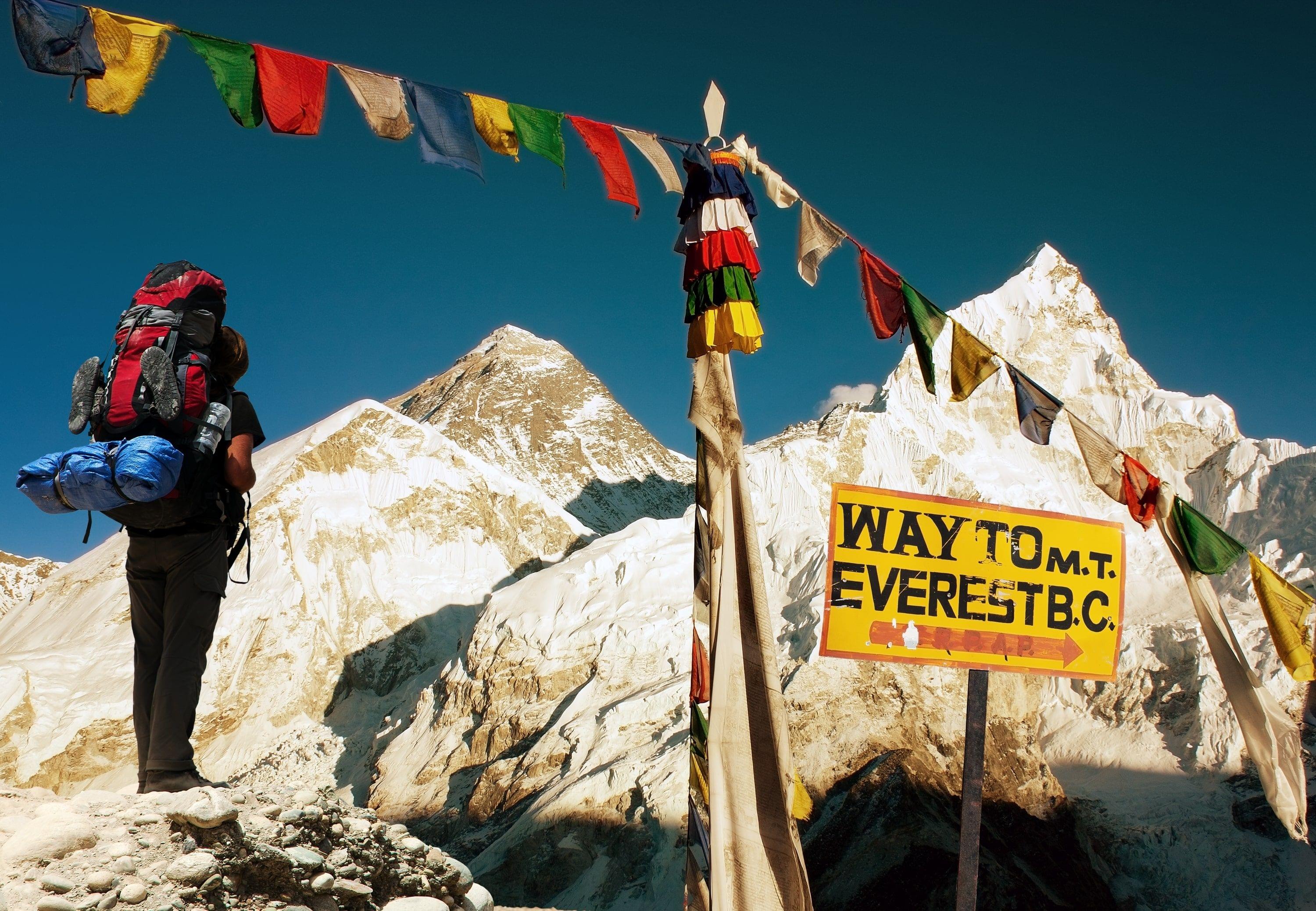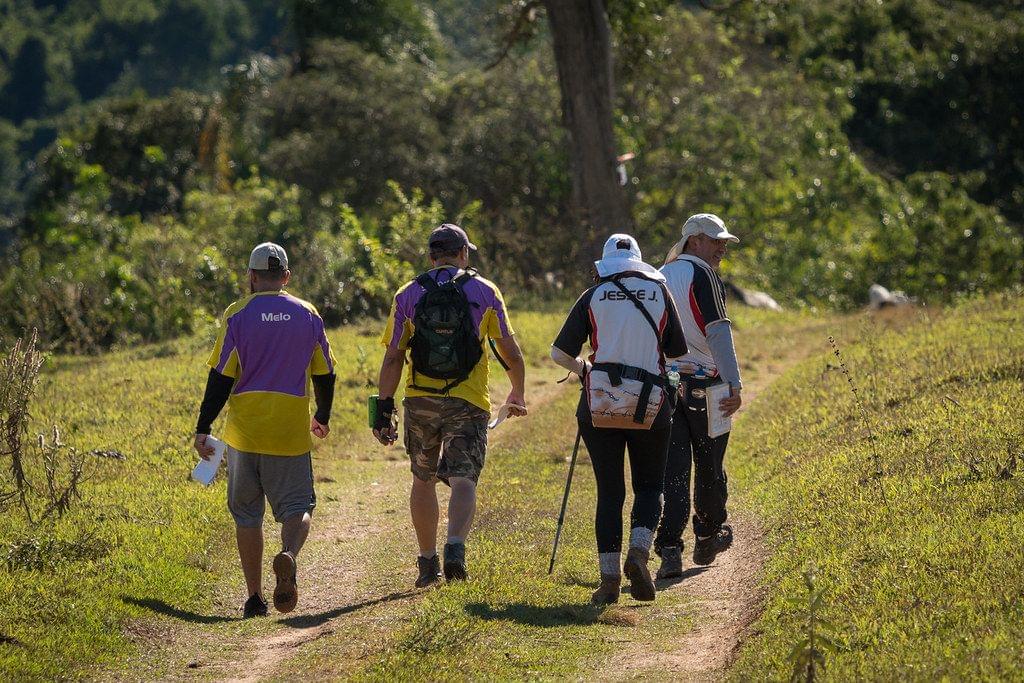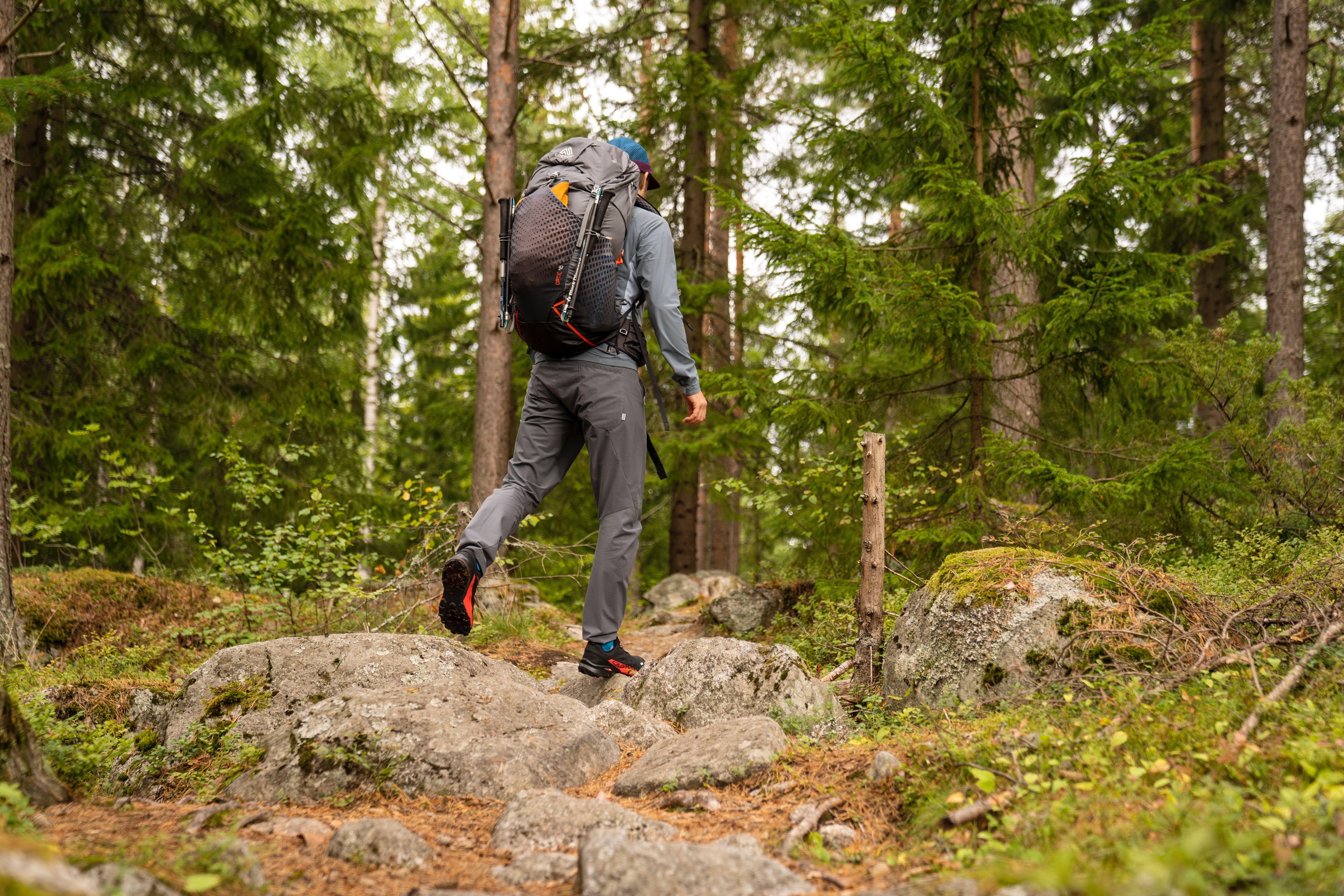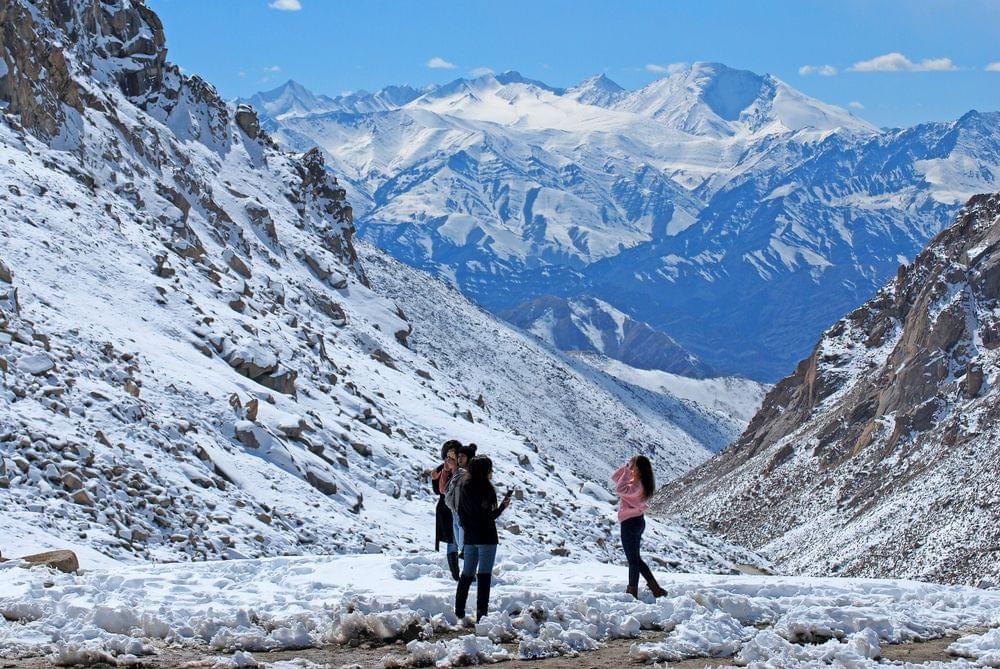Annapurna Base Camp Trek Overview
Highlights of Annapurna Base Camp Trek
Maximum altitude of Annapurna Base Camp: 4130 Meters
Duration: 9 Days
Trekking distance: 110 KMs
Trail type: Moderate to difficult depending on age, fitness and experience
Airport: Pokhara Airport is closest but it is a domestic airport, Kathmandu Airport is the main airport
Snow Season: December - February, early season suggested for trekking but the late winters can be dangerous
Best season for ABC Trek: Pre-monsoon months of March, April, and May are the best times to hike to Annapurna Base Camp & also during Autumn season in the months of September, October, November.
Region: Pokhara, Nepal
Who can participate: Recommended for people in their 20s and 30s, chronic ailment free people
Short Itinerary for ABC Trek
Annapurna Base Camp Trek Detailed Itinerary
Arrival in Pokhara
On the first day, you will have to arrive in Pokhara, where the representative will meet you and take you to the accommodation.
Overnight at Pokhara for acclimatization.
Pokhara to Ghandruk
Marking the first day of the trek, you will start with a short bus to Nayapul where the trekking begins.
You will first trek downhill to Birethanti by crossing the suspension bridge built over the Bhurungdi River. This small village is where you will be signing formalities with the authorities.
Following this, the trek starts to climb upwards towards Ghandruk via Chane. The trek to Ghandruk is initially flat along the Modi River, before winding till Kimche and rising till Ghandruk.
Spend the evening in the village and sleep overnight at a lodge in Ghandruk.
Ghandruk to Sinuwa
This morning, we will leave the village of Ghandruk behind as we begin the trek towards Sinuwa.
The 6 to 7 hours long trek first goes along the Modi River, before diverting away and climbing towards the destination. You will be crossing several boulders before coming across a bridge on the Kimrong River.
The trail then becomes steep till you reach Gurung Village, in Chhomrong by crossing Jhinu Danda. At Chhomrong, we will cross a bridge over the Chhomrong River.
As we hike to Sinuwa from here, the views of forests of bamboo, rhododendron, and oak forests will be really mesmerizing.
Overnight at a lodge in Sinuwa.
Sinuwa to Deurali
The trek today starts from Sinuwa on a very easy note till we reach Kuldhigar.
At this point, a steep stone staircase will lead you Dobhan through a suspension bridge crossing. The trek for the day is lined by bamboo, rhododendron, and Oak forest.
After hiking through the valley to Himalaya and Hinku Cave, you will be reaching Deurali, which is the destination for the day.
Overnight at a lodge in Deurali.
Deurali to Annapurna Base Camp
This day is going to be the most wonderful as we begin on the final stretch towards the Annapurna Base Camp.
A simple walk along the River Modi will bring us to Bagar. Bagar is the starting point of the trek to Machhapuchare base camp (3,700m).
After an hour of rest at Machhapuchare and spending some time looking at some of the most majestic peaks towering above 7000-8000m, we will begin the trek that leads us to the Annapurna Sanctuary.
After hiking a little more, we will arrive at the base camp of the South Annapurna. Spend some time looking at the 360-degree views of some of the highest mountains in the world around you.
Overnight at a lodge in the Annapurna Base Camp.
Annapurna Base Camp to Bamboo
After spending some more time in the sanctuary, you will be retracing your steps to reach Bamboo via Bagar, Deurali and Dobhan.
You will pass many waterfalls, caves, temples, and forests of rhododendron, oak, and bamboo.
Overnight at a lodge in Bamboo.
Bamboo to Jhinu Hot Spring
The morning begins with a hike from Bamboo to Kuldhigar to visit the office of ACAP.
From here, you will hike down to a bridge over the Chhomrong River after passing Sinuwa. Crossing the bridge brings you to Gurung Village.
A steep hike downhill will bring you to Jhinu Danda, where you can relax and unwind in the hot springs after a long day of trekking
Overnight at a lodge in Jhinu Danda.
Jhinu Hot Spring to Pokhara
You will begin the day's trek by crossing the bridge on the Modi River. You will pass many forests and village settlements before arriving at Syauli Bazaar.
Syauli Bazar marks that point of the trek where the terrain becomes flat till Nayapul. A small hike from here will take you to the offices where you can perform the check-out formalities with the authorities.
After this, you will be crossing the suspension bridge on the Bhurungdi River to arrive at Nayapul, from where the bus will take you back to Pokhara.
Spend the evening at leisure, exploring Pokhara.
Overnight at Pokhara accommodation.
Departure
This morning, you will check out the accommodation and bring the experience to an end.
You can then move onto your onward journey.
What to Pack for ABC Trek?
Regardless of the scenery, you should be prepared for the Annapurna Base Camp hike. You need to make sure you're outfitted with the appropriate equipment in addition to preparing for a high-altitude hike and preparing yourself for absolute basic meals.
Layers - Even though it's frigid outside, the moment you start moving, your body temperature will begin to rise. Put on layers that are simple to take off when you start to sweat and put back on when you finish.
4-5 t-shirts or tank tops that wick away moisture.
A few long-sleeved shirts.
A cashmere sweater or a few fleece shirts.
Climbing socks (and a few pairs of warm non-trekking socks for apres-hike wear)
Hiking boots - These are necessary. Obviously. To lessen the likelihood of blisters and aching feet, choose hiking footwear that are water-resistant and provide ankle support. Also, make sure the boots are broken in. It's a good idea to wear your boots everywhere before your walk so that your feet become accustomed to wearing them constantly: on practice treks, to work, and around the house.
Puffer jacket - You may question your decision to bring a puffer during the first few days of the walk, but as you pass the 3000 meter/9842 foot mark, you'll be glad you did. Purchase a high-quality down jacket that can be folded up into a pocket or bag to reduce space in your pack A cozy hat to protect your head from the cold.
Gloves - Buy a pair of thick, fleece-lined gloves since freezing fingers can ruin the peace of a beautiful daybreak.
A cap - With a baseball cap, you can keep the sun off your face while also hiding your untidy hair.
Woollen buff - Keep your neck safe! A fleece buff won't get caught in the breeze like a scarf might, and it can also be used as a cap or an ear warmer.
Medicines
Keep these medications readily available and in your possession at all times. Never take medication without first speaking to your journey leader.
One strip of Diamox Be on a regimen of half a pill of Diamox every 12 hours beginning in Delhi (125 mg). Continue taking the medication until you reach Tapoban.
One strip of dexamethasone is included in the kit for life-saving medications. Avoid taking this by yourself. In the event that it is necessary, your trek leader will let you know.
Five tablets of nifedipine are included in the Life Saving Drugs package once more. Avoid taking this by yourself. In the event that it is necessary, your trek leader will let you know.
Paracetamol, called Dolo 650 (5 tablets). It aids in reducing fever and minor pain Carry avomine (4 pills) in particular if you are prone to motion sickness. Pop 30 minutes before you leave for your car trip.
Take a combiflam (5 tablets) if you experience a sudden twisting of the leg or a muscle strain. It is an analgesic. It also has paracetamol in it.
Take Digene (4 pills) if you believe your meal wasn't well digested. Inform your trek leader right away. It can be a symptom of AMS.
Know Before You Go for ABC Trek
Training - Though Annapurna trek does not involve any climbing or require any particular skill but it is really important to be physically fit as you really need to use your strength since the trek involves a lot of walking up hill, down hill and then up again.
Get the right Gear - Be sure to carry the right gears for your trek, the primary one being your trekking shows. When you are choosing your trekking shows, make sure they are sturdy and appropriate for the terrain you are trekking.
Hydration - When you are gaining altitude the chances of you getting dehydrated is very high. It is recommended that you drink at least 4-5 liters of water to avoid AMS.
Walk Slow - It is recommended that you walk slow and steady and not fast, since walking fast leads to exhaustion too fast resulting in multiple breaks. When you take a break, your body comes to rest and then starting all over again loses the potential. Walking slow and steady also saves you time than walking fast.
Protection from the sun - Be sure that you protect yourself from the sun. Direct sunlight tends to suck the energy out of you and you become dehydrated as well as exhausted.
By Flight: One of the most convenient ways to reach Pokhara is by taking a flight. There are several airlines that operate flights to Pokhara from major cities in Nepal and India, such as Kathmandu, Delhi, and Mumbai. It's important to note that there is only one domestic airport in Pokhara and the flight schedules can change frequently depending on the weather conditions. So it's better to check the flight schedule in advance and book the tickets accordingly.
By Bus : Take the bus (400 NPR, approximately 4 hours) from Pokhara to Kimchi, and then start your hike from there.
By Car: Take a cab or a jeep to Nayapul (2000 NPR, 2 hours), then choose to hike there or continue by jeep to Gandruk (1500-2500 NPR, 2 hours)The journey before Kimchi and Gandruk is primarily along a dusty jeep road and is not particularly exciting. To save time and energy, it is advised to travel as far as you can by car. To register your permission, you will need to make two stops in Birethanti, and then another stop in Chomrong.
Autumn - Autumn in the Himalayas lasts from September through November, with October being regarded as the finest month to hike the Annapurna. There are no longer any dusty trails because of the monsoon. Since it is prime trekking season, tea shops will be busy, particularly in Manang. The Annapurna trek can be hiked in the winter, with November and December providing a pleasant break from the autumn trekking hordes. Be ready for chilly days and even icier nights, as well as the chance of delays or detours caused by snow.
January - The Thorong La crossing is dangerous to cross in January because to the heavy snowfall, and many trekkers will find the trail closed.
February, March & April - Warmer, longer days and a delightful alternative to the hectic fall trekking season, when pink rhododendrons are in full bloom, can be found in February, March, and early April.
May - Although May is warm, especially at lower altitudes, there is a chance of pre-monsoon rain. You must therefore be adequately equipped with wet-weather clothing.
June, July & August - The monsoon season, which peaks in June, July, and August, increases the risk of landslides on the unstable slopes and flooding of the lower sections of the circuit's rivers. The landscape becomes lush and green, and it doesn't rain every day, but views of the Himalayas are largely blocked by clouds.
Why to Go for Annapurna Base Camp Trek?
FAQs of Annapurna Base Camp Trek
How Difficult is the Annapurna Base Camp trek?
The walk to Annapurna Base Camp winds across some of the tallest mountains in the world. You get a world-class mountain viewing hike while traveling through the renowned Annapurna Sanctuary at a relatively lower altitude.Your hike to Annapurna Base Camp will be spent primarily below 3,000 meters/10,000 feet. The terrain is difficult and it has countless stairs. Anyone who is willing to put in the necessary planning and training can complete this expedition. However, in order to properly appreciate and enjoy this breathtaking Himalayan Adventure, you will need to complete the necessary training.
What is the altitude of Annapurna Base Camp Trek?
The altitude of Annapurna Base Camp is 4130 m.
Is Annapurna Trek Base Camp dangerous?
No, Annapurna Base Camp Trek is not dangerous if you are doing the trk at the right season. The steep slopes of Deurali and Machhapuchhre are prone to landslides during monsoon and avalanches during winter.
Will there be electricity in the Annapurna Base Camp?
There will be electricity at the tea houses where you will spend your nights. But the electricity is not reliable here so it is recommended that you charge your phone and carry a 10000 mAh power bank with you to charge your phones and camera.
Is there snow at Annapurna Base Camp?
The pre-winter storm can bring down snow to lower levels, as low as 2300 m. The mid-winter has most of the trails covered in snow.
.png?w=auto&h=400)




